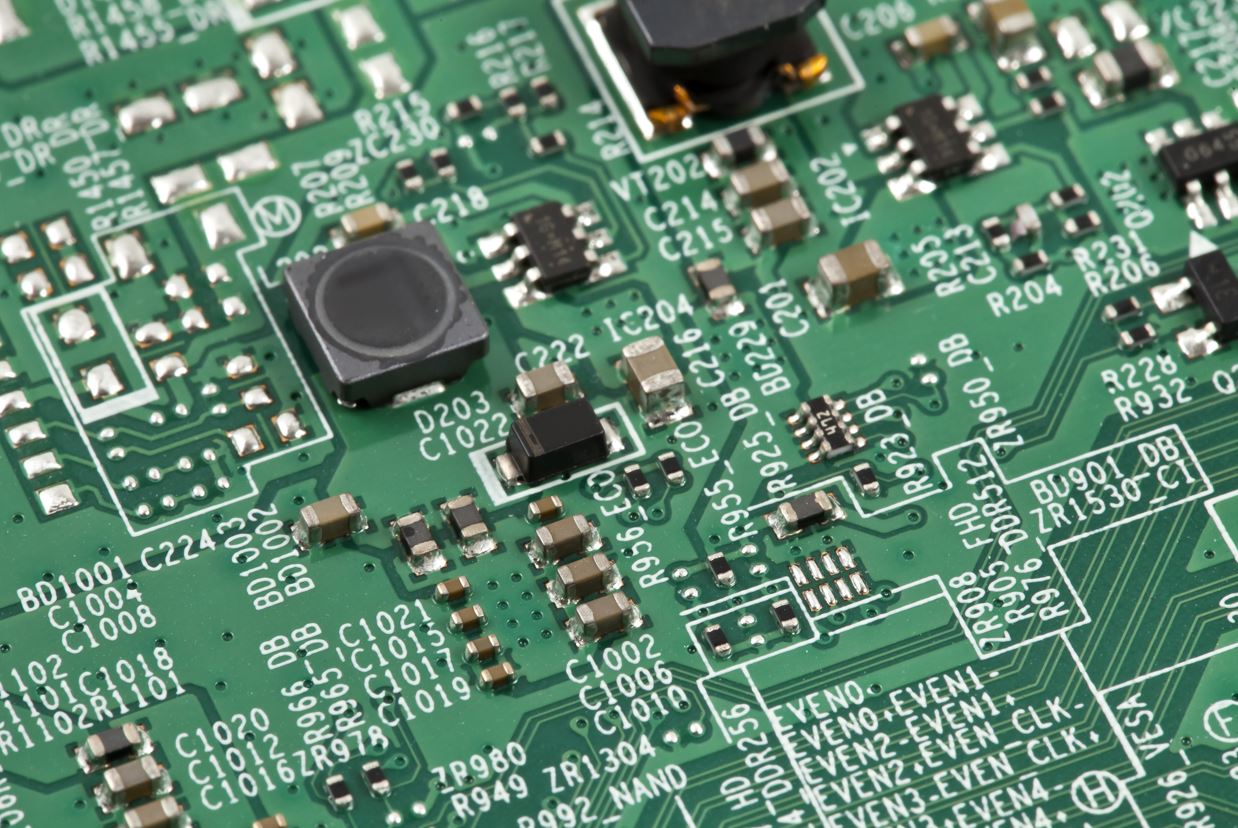EMC Question of the Week: December 25, 2023

Which of the following EMC design guidelines for circuit board layouts, widely published online, has been debunked in peer-reviewed publications?
- 20H rule
- avoid 90o trace bends
- put guard rails on clock traces
- all of the above
Answer
The best answer is “d.” Each of these often-cited EMC design guidelines has virtually no merit and typically does nothing to improve the odds of a product meeting its EMC requirements.
The 20H rule states that the edges of a power distribution plane should be set back from the edges of the ground plane by a distance equal to 20 times the vertical spacing between the planes. The stated purpose of the rule is to reduce radiated emissions from the power bus. However, measurements and models published in a number of papers over the past 30 years (e.g., [1,2]) have demonstrated that adhering to the 20H rule actually increases the radiation from the antenna formed by a power plane above a ground plane. In boards with power planes sandwiched between two ground planes, the radiation directly from the power planes is insignificant. Of course, in some circumstances there may be a good reason to keep the power plane from extending to the edge of the board. But decisions about the location and extent of the power plane should be made on a case-by-case basis, and the 20H rule should not be part of that decision process.
There is probably no EMC design guideline that has received more scrutiny than the advice to avoid 90o corners in microstrip or stripline traces. All of the papers published on this topic (e.g., [3,4]) have drawn the same conclusion. There is no significant difference in the radiated emissions from traces with 90o corners compared to traces with 2, 45o corners or rounded corners. In fact, radiation directly from microstrip or stripline traces is not really much of an EMC issue at all. From a signal integrity standpoint, sharp corners become a problem at data rates well above 1 Gbps.
Guard rails sounded like a good idea 40 years ago. They were supposed to help contain the fields surrounding a microstrip clock trace and reduce coupling to other nearby traces. In the 1980s and 1990s there were many anecdotal accounts of designers who solved crosstalk problems by adding guard traces. One detail often left out of these accounts, however, was that adding guard traces increased the edge-to-edge separation between the source and victim traces. Many models and measurements over the years (e.g., [5,6]) have demonstrated that guard traces don't make much of a difference and can actually make coupling between microstrip traces worse. Yes, there are some situations where a guard trace can be helpful, but for the trace widths and layer spacings found in most circuit boards today, they tend to be more trouble than they're worth.
Important Note: It's not difficult to find conference and journal publications that draw conclusions appearing to support each of the design myths above. These publications are good examples of why it is important to read and understand the whole paper, not just the conclusions. For the most part, papers supporting these design guidelines model geometries that are inconsistent with today's circuit boards; or they draw conclusions based on changes to insignificant quantities.
Have a comment or question regarding this solution? We'd like to hear from you. Email us at
References:
[1] Shinichi Ikami and Akihisa Sakurai, "Practical analysis on 20H rule for PCB," 2008 Asia-Pacific Symposium on Electromagnetic Compatibility and 19th International Zurich Symposium on Electromagnetic Compatibility, Singapore, 2008, pp. 180-183.
[2] Huabo Chen and Jiayuan Fang, "Effects of 20-H rule and shielding vias on electromagnetic radiation from printed circuit boards," IEEE 9th Topical Meeting on Electrical Performance of Electronic Packaging (Cat. No.00TH8524), Scottsdale, AZ, USA, 2000, pp. 193-196.
[3] Eric Bogatin, "Should You Worry About 90 Degree Bends in Circuit Board Traces?" Signal Integrity Journal, April 13, 2021.
[4] Yuriy Shlepnev, "Validation of Bend Models with Measurements," Simberian, Inc., April 2, 2021.
[5] Ritchey, Lee W. and Zasio, John J, “Right The First Time, A Practical Handbook on High Speed PCB and System Design, Volume 1," Speeding Edge, 2003.
[6] Eric Bogatin and Lambert Simonovich, "Dramatic Noise Reduction using Guard Traces with Optimized Shorting Vias," DesignCon 2013.
